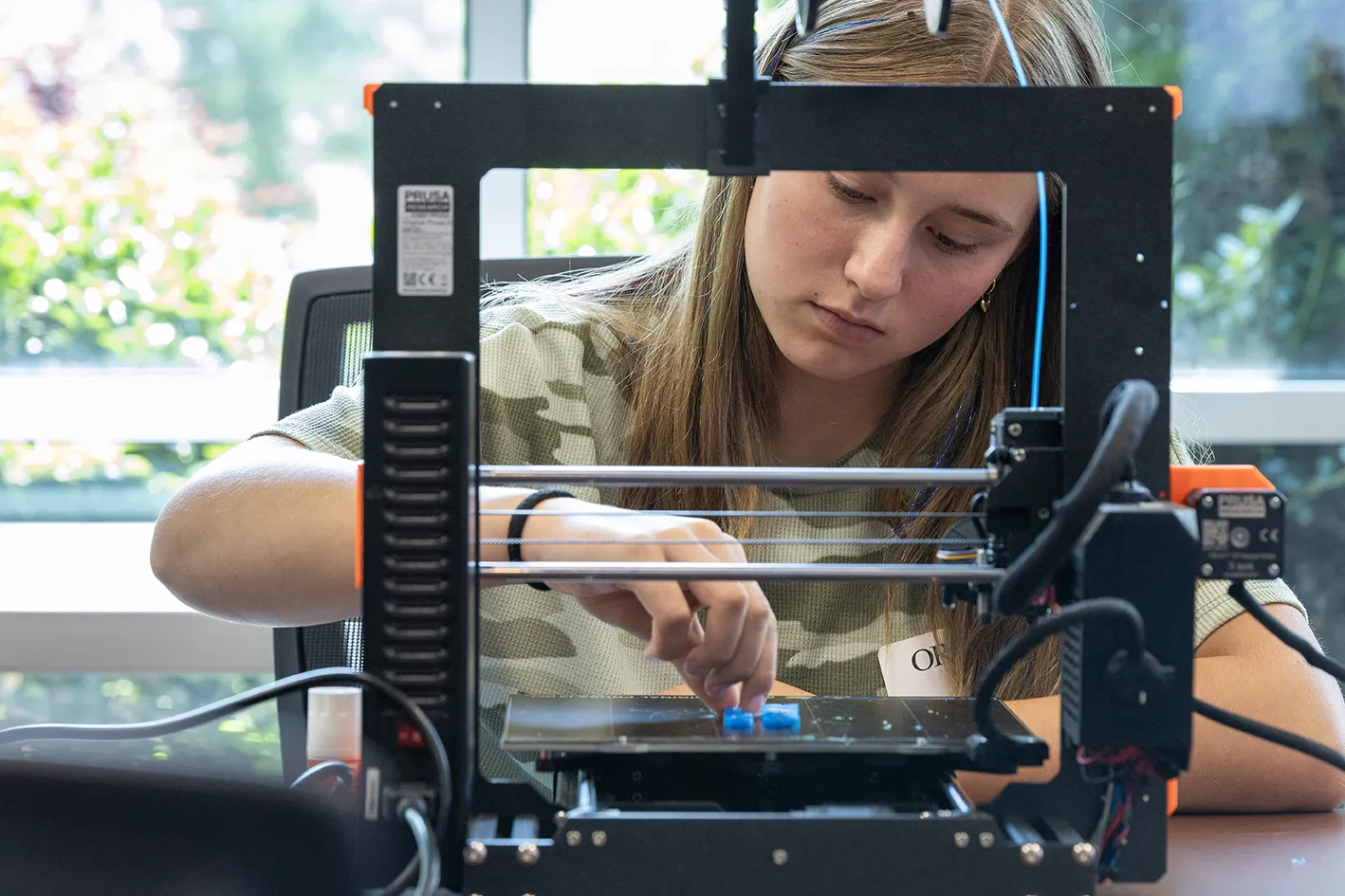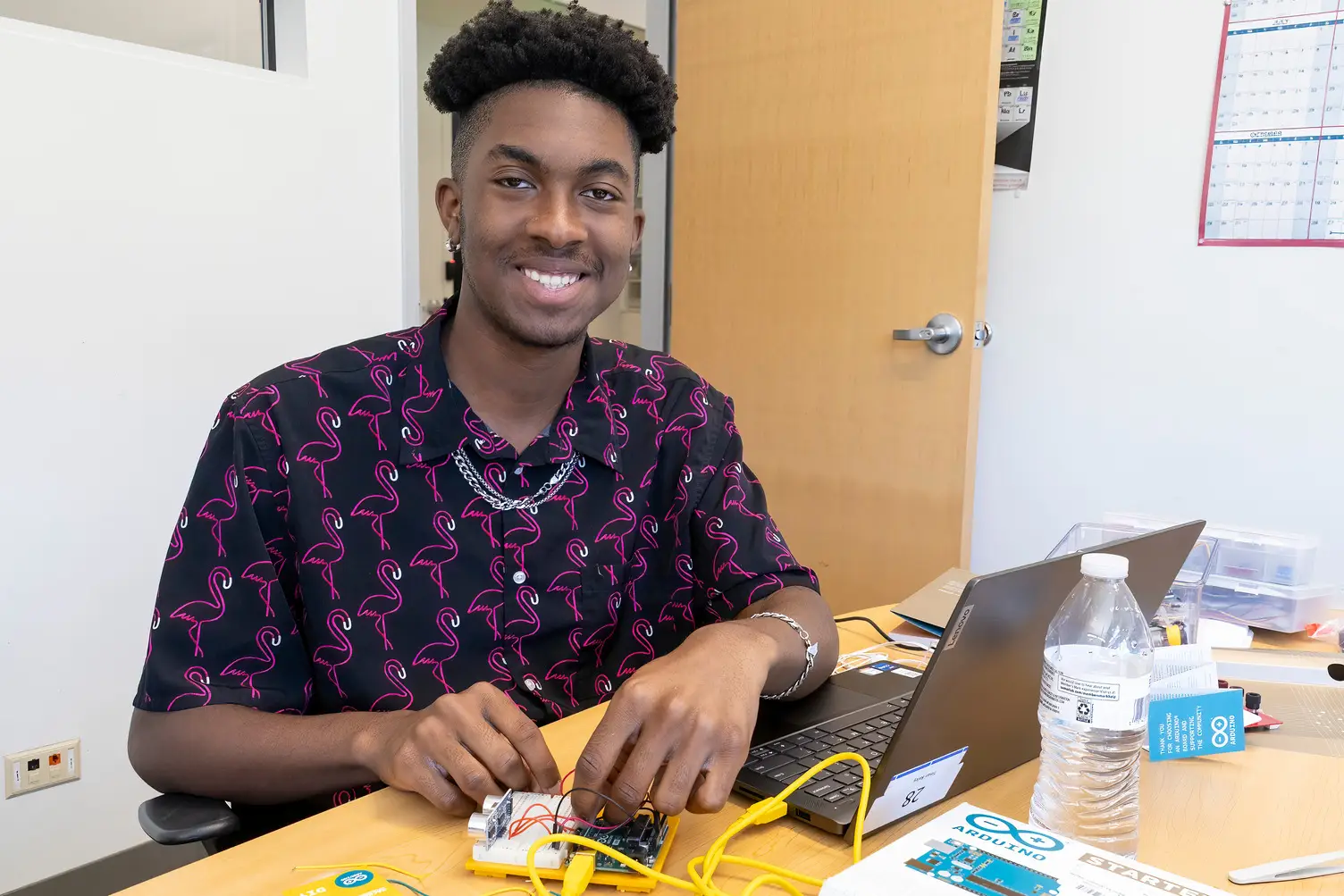You wouldn’t know it by glancing through the window of ORAU’s classroom, but a group of high school students was learning soft skills like self-confidence while also learning computer-aided design (CAD) and 3D printing.

ORAU hosted a CAD course and 3D Printing Mini-Academy June 4-5, 2025.
The ORAU CAD Design and 3D Printing Mini-Academy was a workshop for rising 9th, 10th, 11th and 12th-grade students, which was held in the classroom on ORAU’s main campus, June 4 and 5, 2025. The workshop offered a dynamic, hands-on approach to understanding CAD and 3D printing.
Kristy Hutson, Ed.D., who led the mini academy, said students arrived with a variety of experiences with CAD courses and 3D printing, from being complete newcomers to having some level of comfort with the technology and the processes involved.

Kristy, Hutson, Ed.D., of Oak Ridge High School led ORAU’s CAD course and 3D Printing Mini-Academy.
Hutson, who teaches first-year engineering and business marketing at Oak Ridge High School, said this was the first time she led this computer design workshop for students as part of ORAU’s K-12 summer STEM programming. She had led a similar session for educators that focused on how to integrate engineering thinking across multiple disciplines for any grade level.
“We got to take their collective experiences and watch them grow,” Hutson said. “Over the past two days every single participant said they walked away learning something. When you have a group of participants willing to learn, it’s amazing what you can learn in seven-and-a-half to eight hours.”
Perhaps most importantly, Hutson said, the students developed confidence in themselves. Before they could 3D-print, students had to learn to 3D-model, which is where Tinkercad, the design engineering program Hutson used, comes in.
“It’s easy to pull something from online and print someone else’s model. To stare at a screen with nothing on it and start from scratch to create something tangible – the creativity side is important,” she said.
After her students learned to use Tinkercad they were instructed to design and print a chess pawn, which is challenging because while it’s a small piece it has multiple layers and involves different shapes. After creating the chess pawn, students were challenged to construct a phone stand using as little 3D-printing filament as possible, while still making it functional.

ORAU’s computer design course encouraged students to flex hard and soft skills.
Students designed, printed, tested, iterated, adjusted, and printed again. “They go through the full engineering process,” Hutson said.
She adds that the CAD course was structured so that kids felt like they had time to move through all the steps at their own pace. She didn’t want them to feel rushed or compare themselves to other kids in the workshop.
“They got to take complete ownership of what they did,” Hutson said.
Taking ownership helps students gain self-confidence when facing a challenge like computer-aided design.
